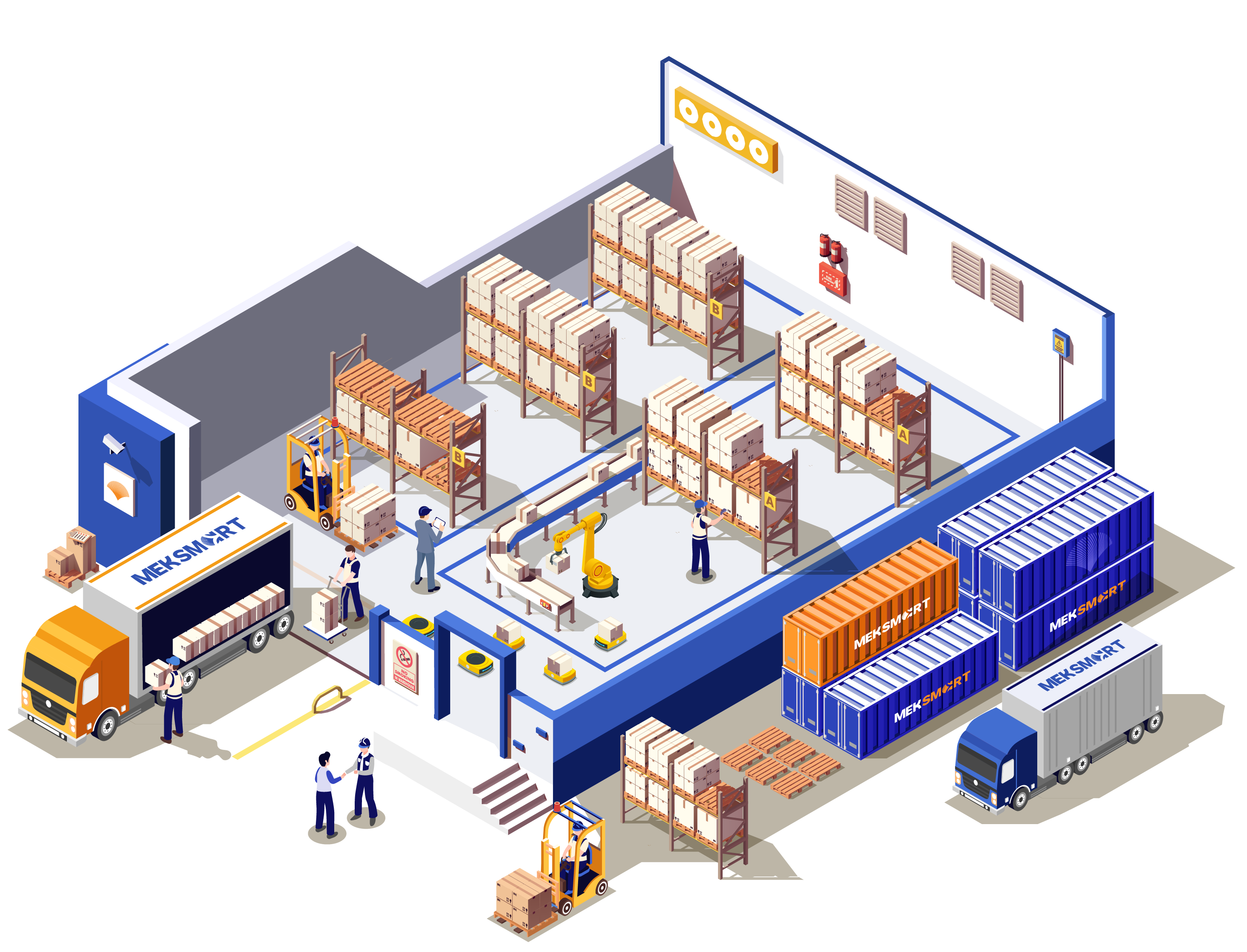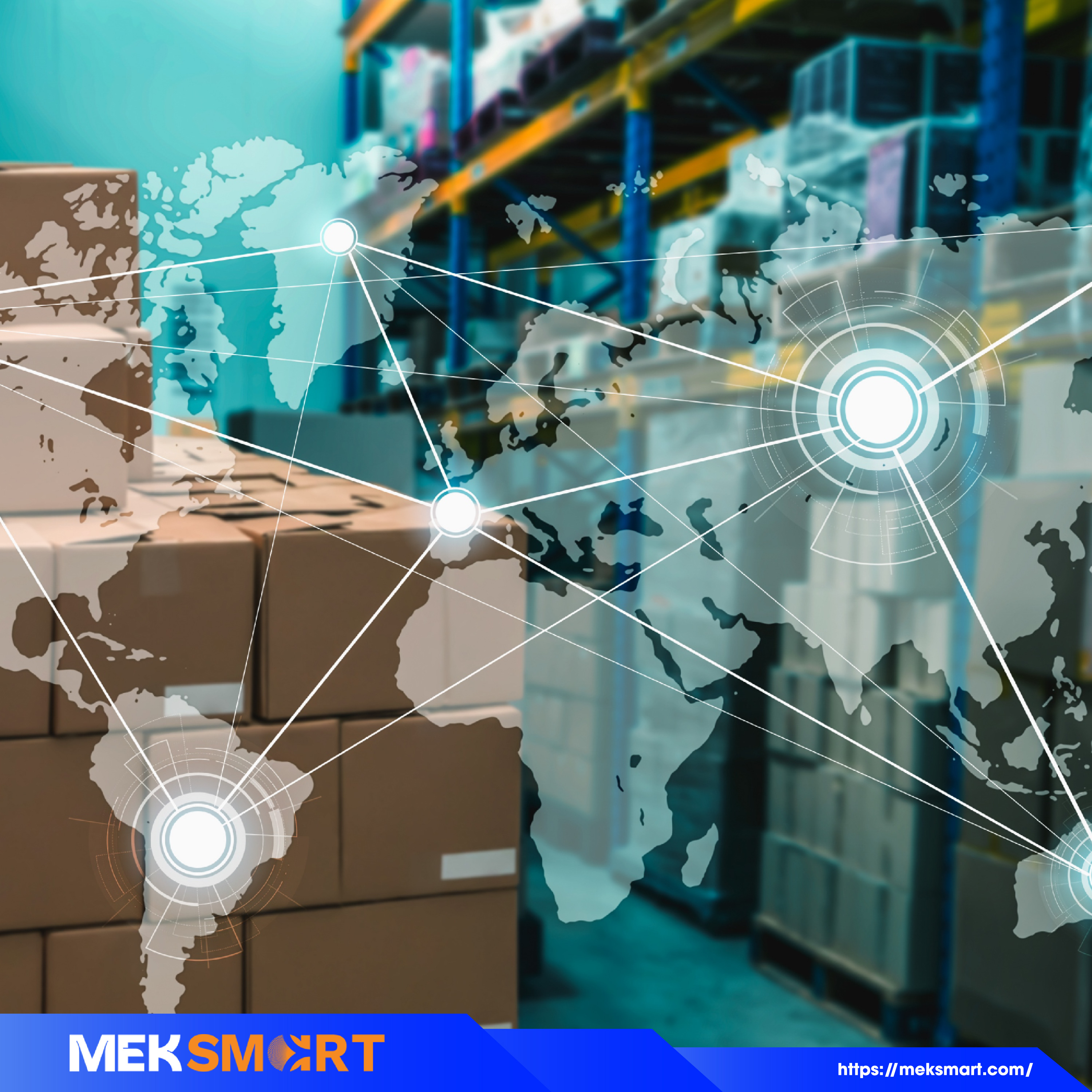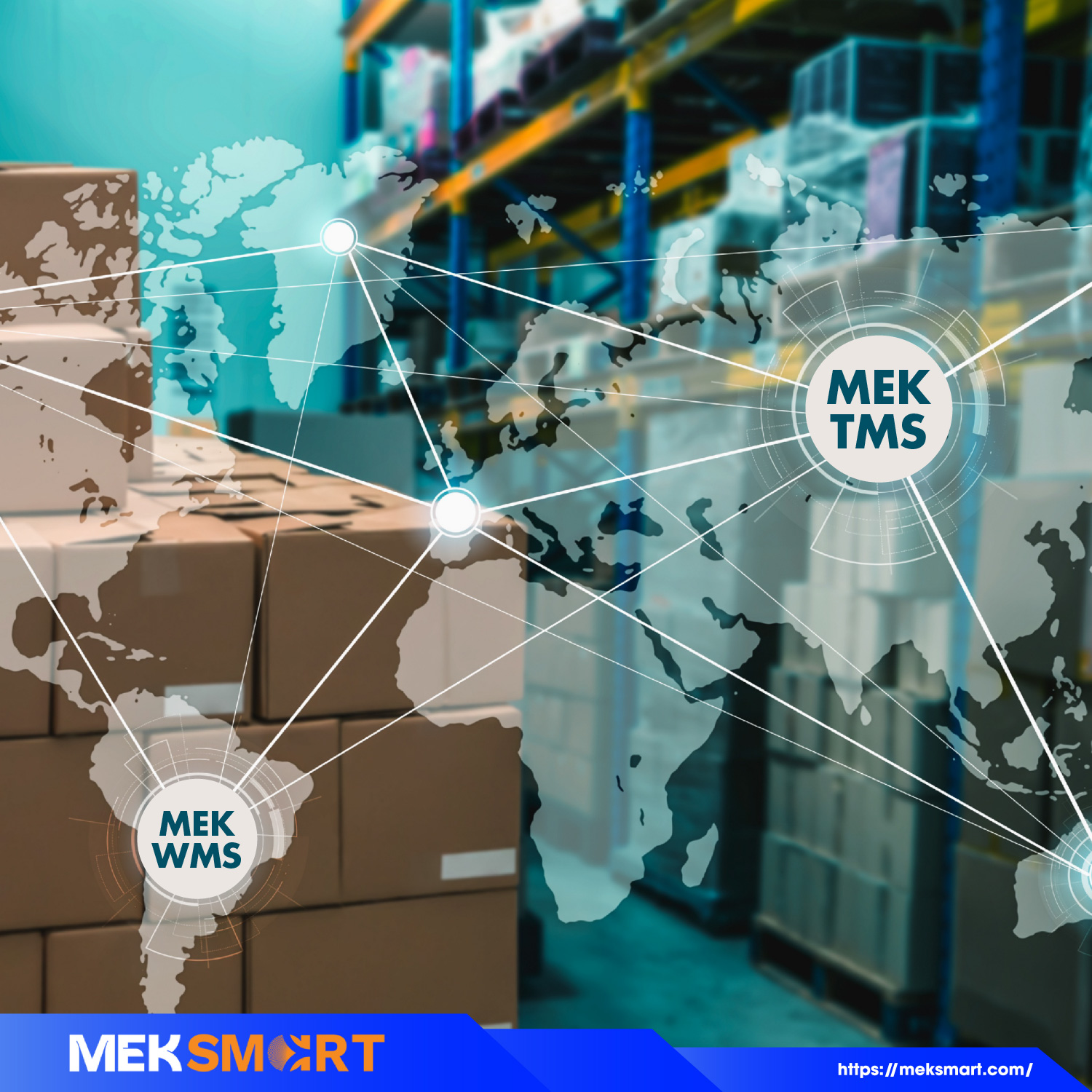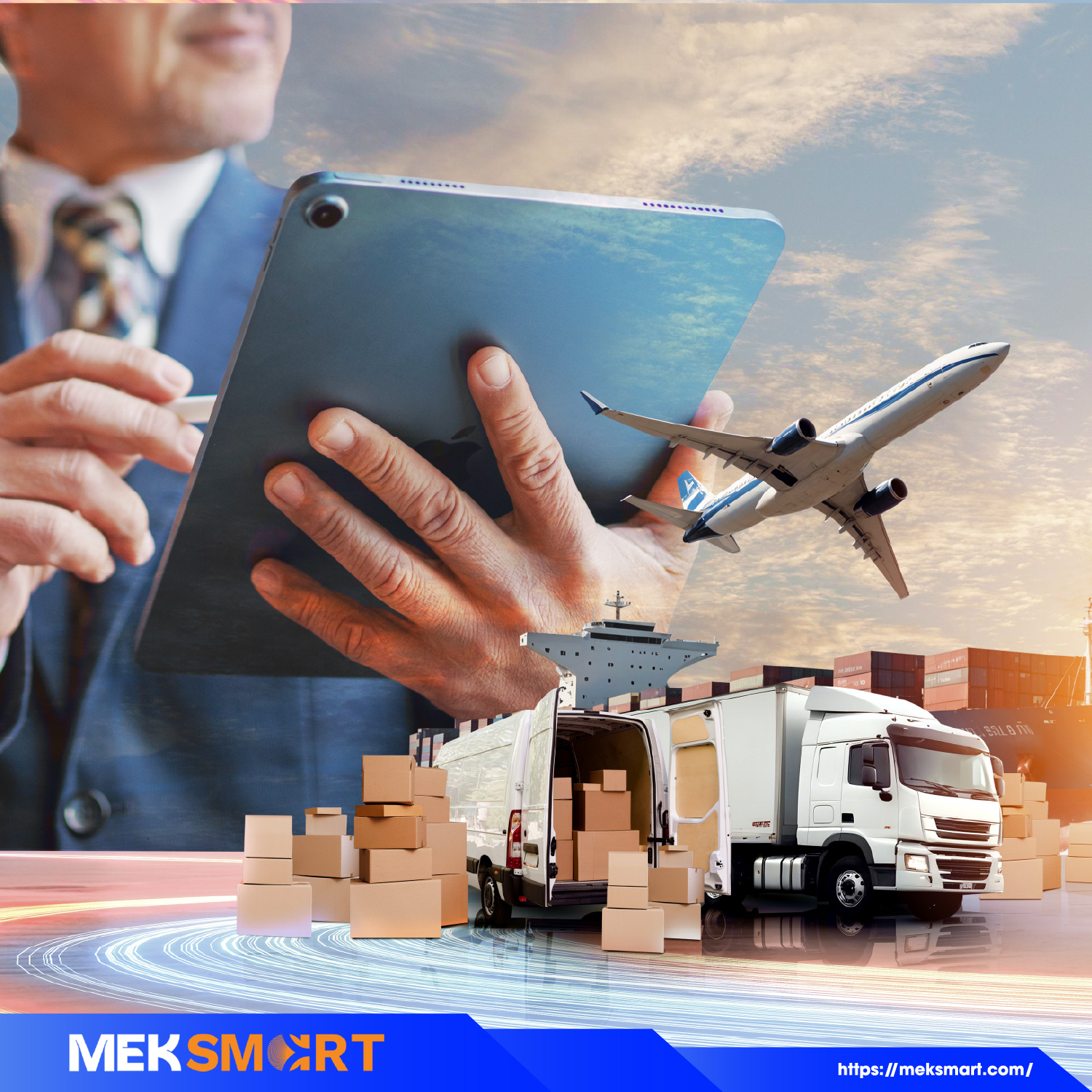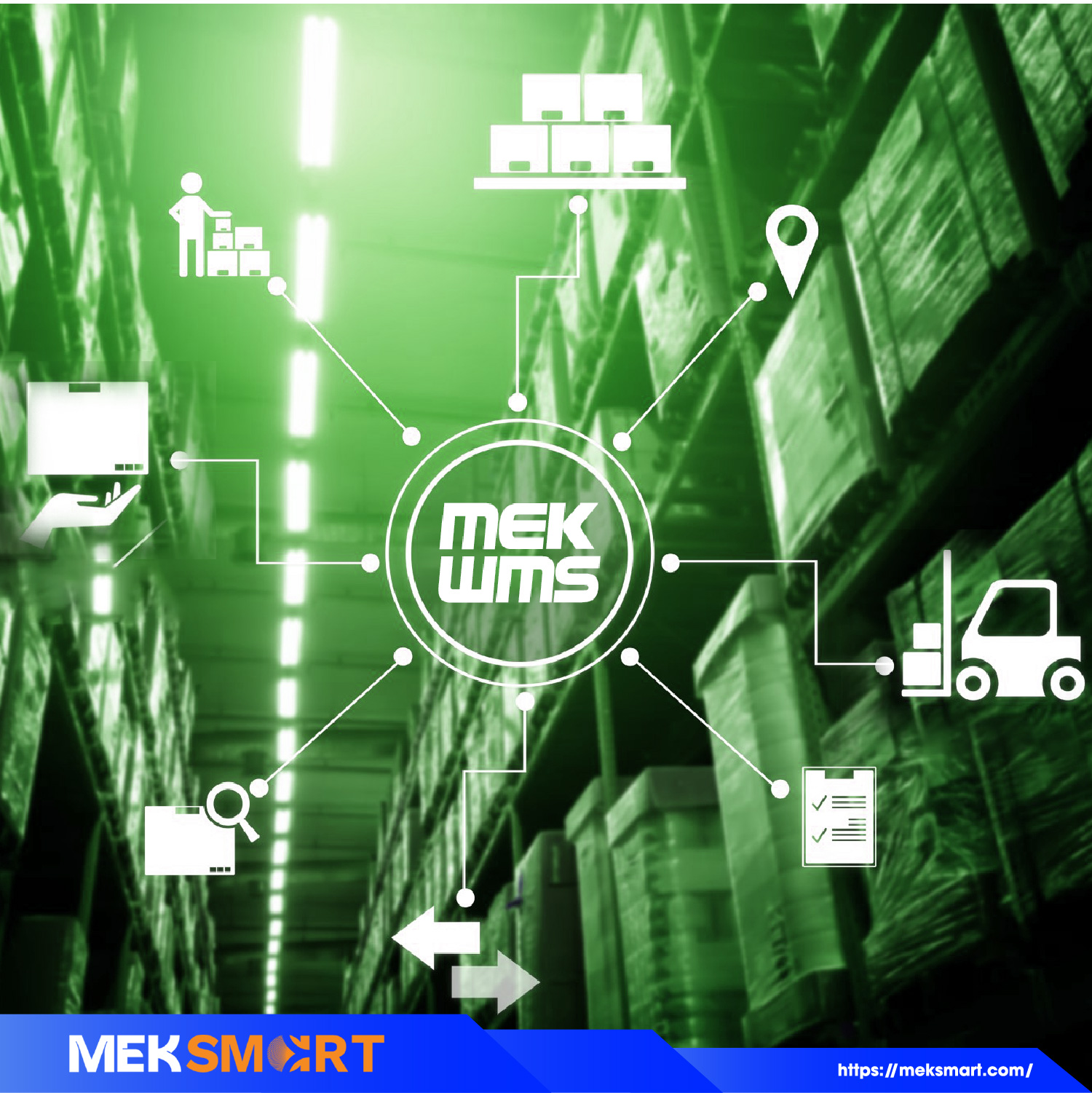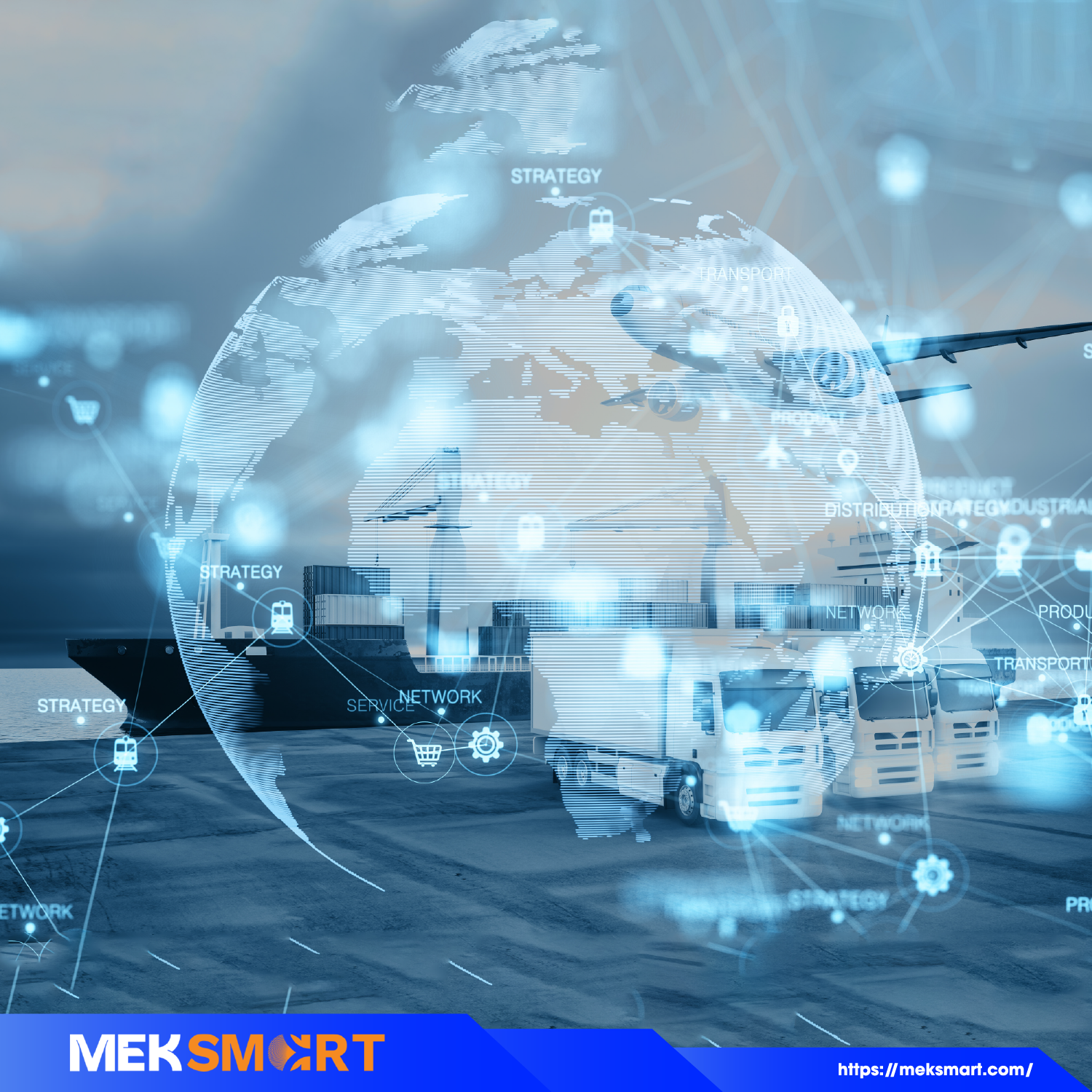MEKSMART
GENERAL NEWS
Author: Meker Meksmart
Update: 23/07/2025
ERA 4.0 - AI, IOT ARE "REWRITTEN" THE LOGISTICS INDUSTRY
In the context of strong digital transformation, Smart Logistics is becoming an inevitable trend to help businesses optimize their supply chains and improve their competitiveness. The emergence of technologies such as AI, IoT and Blockchain has been "rewriting" the way the Logistics industry operates. This is an inevitable step for businesses to improve their competitiveness and control their supply chains more effectively in a volatile market environment. Let's explore with Meksmart right away.
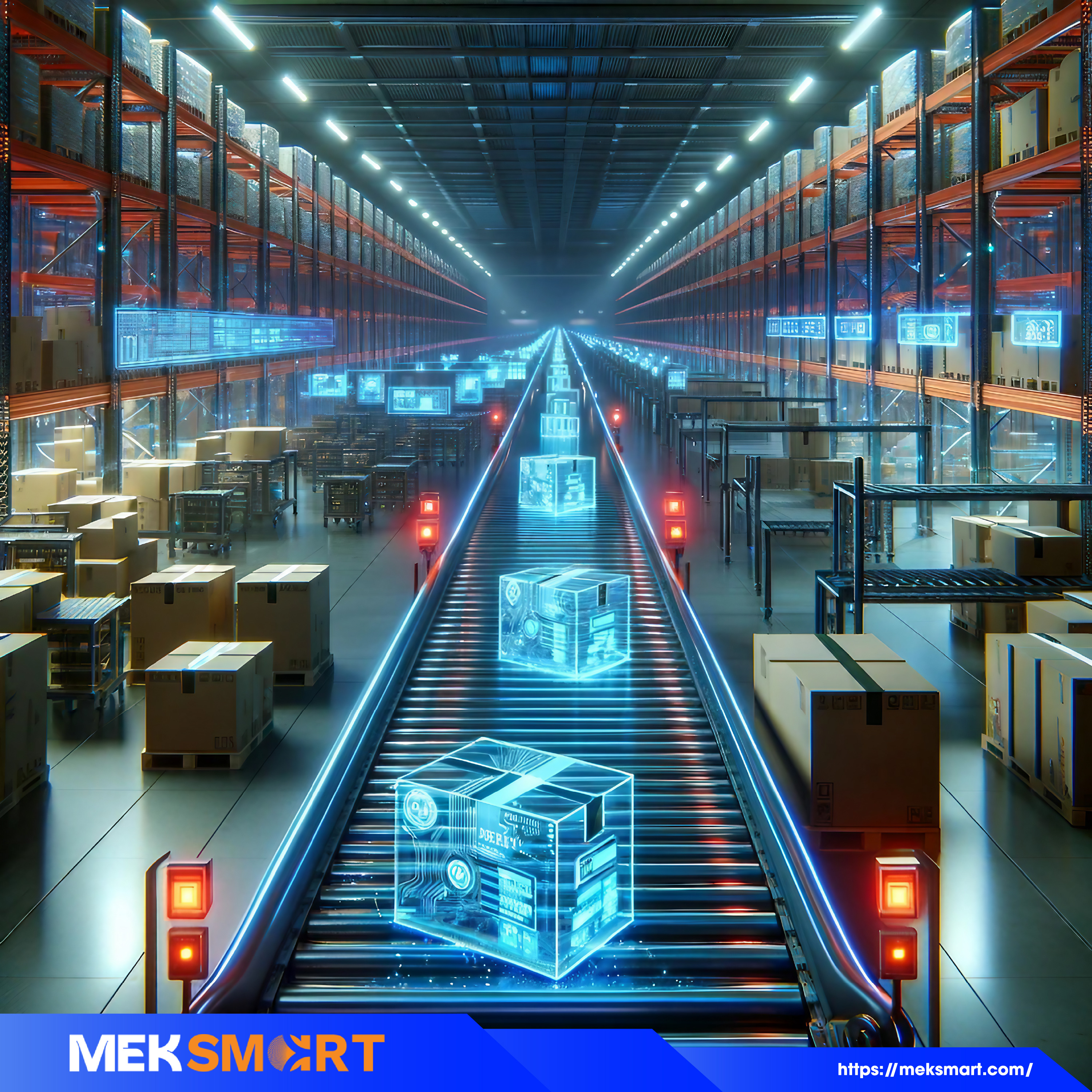
The 4.0 era is "rewriting" the logistics industry
AI and IoT trends in the Logistics industry
In the era of digital transformation, AI (artificial intelligence) and IoT (Internet of Things) are becoming the key technology duo shaping the future of the Smart Logistics industry. Notable applications include:
- Demand prediction and inventory optimization: AI analyzes real-time data collected from IoT sensors to forecast seasonal demand for goods, consumer trends and market fluctuations. This helps businesses maintain reasonable inventory levels, avoiding excess or shortage of goods.
- Smart transportation planning: Based on GPS data, weather, traffic conditions and vehicle status from the IoT system, AI builds optimal transportation routes, shortening delivery times and reducing fuel costs.
- Warehouse automation: Combining AI and IoT in smart warehouses helps control and coordinate robots (AGVs), drones, conveyor belts and RFID devices, supporting accurate and fast inventory, sorting, packing and moving goods.
- Real-time operational performance analysis: AI and IoT integrated platforms provide reports, early warnings and in-depth analysis of the entire supply chain, helping businesses make timely decisions to improve operational efficiency.
- Increased ability to respond to risks: AI based on IoT sensor data can detect incidents or disruptions in the warehouse - logistics system and provide immediate solutions, minimizing operational risks.

AI and IoT become the key technology duo shaping the Logistics industry
Application of AI and IoT in the Logistics industry
In the 4.0 era, the application of AI (Artificial Intelligence) and IoT (Internet of Things) in the Logistics industry is creating breakthroughs. These two technologies not only help businesses optimize the supply chain but also improve operational efficiency, reduce costs and increase competitiveness in the market. Below are typical applications of AI and IoT in modern Logistics management:
Application of artificial intelligence (AI) in Logistics management
- Predicting and optimizing demand: AI uses machine learning algorithms to analyze historical data and market trends to accurately forecast future product demand. From there, businesses can plan production, inventory and distribution reasonably, avoiding excess or shortage of goods.
- Schedule management and transportation optimization: AI supports transportation planning based on analysis of many factors such as distance, traffic situation, fuel cost and weather. Route optimization not only helps shorten delivery time but also significantly saves operating costs.
- Warehouse operation optimization: In smart warehouses, AI can make recommendations for rearranging storage locations based on the frequency of import and export goods, supporting import - export planning and accurate inventory forecasting. This helps maximize space and reduce order processing time.

Application of artificial intelligence (AI) in Logistics management
Application of Internet of Things (IoT) in Logistics management
- Track and manage goods in real time: IoT devices attached to packages, pallets or vehicles can collect and transmit data about location, status, and transportation conditions. This helps businesses track the route and status of goods continuously, increasing transparency and controlling risks.
- Monitoring environmental conditions in warehouses and transport vehicles: IoT devices can measure indicators such as temperature, humidity, light - important factors in storing sensitive goods (electronics, food, pharmaceuticals, etc.). Instant alerts are sent when there are signs of abnormalities, helping to handle them promptly and avoid losses.
- Enhancing operational safety: IoT also supports monitoring the technical status of transport vehicles such as engines, tires, braking systems, etc. remotely, helping to maintain them in time and prevent unexpected incidents during the delivery process.

Application of Internet of Things (IoT) in Logistics Management
Meksmart accompanies logistics enterprises in digitalizing warehouse management in the 4.0 Era
Meksmart is a leading provider of smart warehouse management solutions (WMS) in Vietnam, with experience accompanying many logistics enterprises, distributors and third-party logistics units (3PL) in a variety of industries. We specialize in providing flexible inventory management solutions, meeting operational characteristics and supporting system customization according to the practical requirements of each enterprise.
MEK-WMS solution (Meksmart Warehouse Management System) is a smart warehouse management system, integrating advanced technology to help enterprises comprehensively digitize logistics operations:
- Real-time inventory tracking and control.
- Automate order processing and intelligent goods classification.
- Optimize warehouse operations, improve transparency and operational efficiency.
- MEK - WMS excels with flexible customization capabilities, easily integrated with other software systems.
AI and IoT are not only technology trends, but have become core elements in reshaping the modern logistics industry. From smart warehouse management to transportation optimization, businesses are gradually transforming to keep up with the development of the 4.0 era. Effective application of these two technologies requires a powerful management platform, capable of deep integration with the current operating system.
Contact Meksmart now for free consultation and experience smart, effective logistics solutions, leading the digital transformation trend in the 4.0 technology era.
>>> Read more: WHAT IS A WAREHOUSE MANAGEMENT SYSTEM? ADVANTAGES OF THE SYSTEM.
